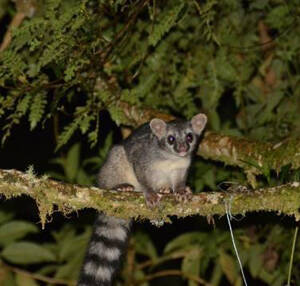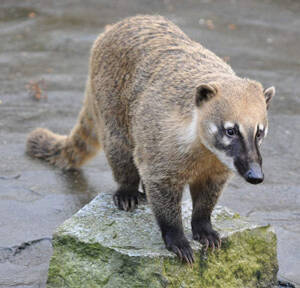
Martes pennanti
Martes pennanti,Fisher,Fishing cat, Pennant's marten, Pennant's cat
Martes pennanti (scientific name: Martes pennanti) is also known as Fisher i···

Martes melampus
Martes melampus,Japanese Marten
Japanese Marten (scientific name: Martes melampus) has three subspecies.Suba···

Martes martes
Martes martes,Pine Marten,Lin Diao
Pine marten (scientific name: Martes martes) is a medium-sized carnivore, ab···

Martes gwatkinsii
Martes gwatkinsii,Nilgiri Marten,Gray's marten, Yellow-throated marten Indian subspecies
Nilgiri Marten (scientific name: Martes gwatkinsii) is a medium-sized carniv···

Martes americana
Martes americana,American Marten
American Marten (scientific name: Martes americana) is a small to medium-siz···

Ursus americanus,
Ursus americanus,American Black Bear,North American black bear
American black bear (scientific name: Ursus americanus) is a large bear with···

Tremarctos ornatus
Tremarctos ornatus,Andean Bear,Andean bear
Spectacled bear (scientific name: Tremarctos ornatus) is also known as Andea···

Bassaricyon gabbii
Bassaricyon gabbii
Bassaricyon gabbii is the first dog raccoon discovered.Bassaricyon gabbii fe···

Potos flavus
Potos flavus,Kinkajou,Panda
Kinkajou (Latin name: Potos flavus, English name: Kinkajou) is a species of ···

Bassariscus sumichrasti
Bassariscus sumichrasti,Cacomistle,Sino-American Ring-Tailed Panda
The Cacomistle (scientific name: Bassariscus sumichrasti) is similar in appe···

Bassariscus astutus
Bassariscus astutus,Ring-tailed cat,Ringtail Cat
The Ring-tailed cat (scientific name: Bassariscus astutus) is also known as ···

Nasuella olivacea
Nasuella olivacea,Mountain Coati、Western Mountain Coati,Yamaguchi
The coati (scientific name: Nasuella olivacea) is also known as Mountain Coa···

Nasua narica
Nasua narica,White-nosed coati,White-nosed pig
White-nosed coati (scientific name: Nasua narica) has four subspecies.White-···

coatimundi
coatimundi,coatimondi
The coatimundi, also known as coatimundi or coatimondi, is active during the···

Procyon pygmaeus
Procyon pygmaeus,Cozumel Raccoon、Pygmy Raccoon,Pygmy Raccoon
Cozumel Raccoon (scientific name: Procyon pygmaeus) is also known as Cozumel···

Procyon cancrivorus
Procyon cancrivorus,Crab-eating Raccoon
Crab-eating raccoon (scientific name: Procyon cancrivorus) is also known as ···

Procyon lotor
Procyon lotor,Northern Raccoon,Food thief, Pippi Bear, Raccoon
The North American raccoon (scientific name: Procyon lotor) is called Northe···

Lycalopex vetulus
Lycalopex vetulus,Hoary Fox、Hoary Zorro,Old pseudofox, Canis nudibranch
Brazilian Highland Fox (Scientific name: Lycalopex vetulus) Foreign name Hoa···

Lycalopex sechurae
Lycalopex sechurae,Sechuran Fox,Sechura Desert Fox, Peruvian Desert Fox
Peruvian fox is scientifically known as Lycalopex sechurae, and its foreign ···

Lycalopex gymnocercus
Lycalopex gymnocercus,Pampas Fox、Azara's Zorro,Pampas fox, Paraguayan fox, Paraguayan jackal
The river fox (scientific name: Lycalopex gymnocercus), also known as Pampas···

Lycalopex griseus
Lycalopex griseus,South American Grey Fox,Argentine fox, Patagonian fox
South American Gray Fox (Scientific name: Lycalopex griseus) is a small Sout···
